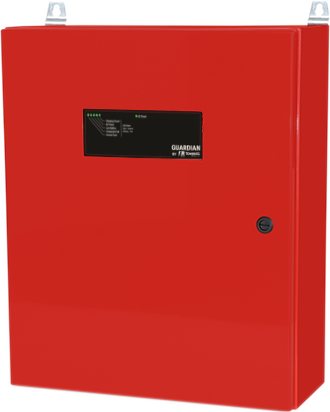 TowerIQ Introduces GuardianB, Guardian BBU, and Guardian TQ-ANN Annunciator for Enhanced Emergency Response Communication
TowerIQ Introduces GuardianB, Guardian BBU, and Guardian TQ-ANN Annunciator for Enhanced Emergency Response Communication
A properly installed PSDAS guarantees that first responders have stable communications while a building is undergoing a fire or other emergency. This infrastructural system that provides emergency responders with two-way radio coverage is just as important as the building’s fire alarm, sprinkler, and security systems.

It is indisputable that Public Safety Distributed Antenna Systems (PSDAS) are considered to be critical building systems. As emergency responders cannot safely respond without communications,
Guaranteeing a life-safety grade power source has historically been the biggest failure of the public safety industry. Make no mistake, this industry has and continues to rapidly mature, but there are still many PSDAS installations without an incident-reliable power source. The trip cord scenario comes to mind - a firefighter’s red signal booster has been installed but the power source is a loose power cable to a standard, normal power wall outlet. This type of installation is unreliable and a trip hazard to any building maintenance! These requirements are in place because all PSDAS engineers, manufacturers, and installers should assume that the buildings' main power source has been lost. While many jurisdictions have imposed even more stringent standards, all active system components should meet the following requirements, including remote radio units in an active type of DAS:
Public Safety Distributed Antenna Systems are susceptible to accidental or malicious damage. Any damaged infrastructure prevents a PSDAS installation from working when an emergency occurs. For example, a single disconnected antenna inside a building can considerably hamper the operations of the PSDAS, not just in reduced coverage but through reflective, power harming overall system performance. While different municipalities have adopted different variations, there are established baseline requirements for mechanical integrity:
In the past, firefighter jacks and phones systems were expected to operate for two-hours to ensure communication and coordinated responses between firefighters. These systems have now been replaced by two-way radio communication enhancement systems, or TWRCEs. Unfortunately, it has been a consistent failing of the public safety DAS industry to provide fire-rated systems, to the point that many critics are saying it is not possible. However, an operational PSDAS during a fire is very possible with the following techniques:
Until recently,
Property managers and fire responders alike hope that these installations are never used but advanced engineering, products, and commissioning are not enough to ensure a building will have life safety communications when lives are on the line. After successfully commissioning a Public Safety Distributed Antenna System, the installation cannot be “set-and-forget,”. Similar to other life safety systems installed in the building, over time devices can become damaged or fail. These preventable issues can be solved by detecting and repairing system faults before the PSDAS is needed by first responders:
Just like with any fire alarm or elevator recall, the Public Safety Distributed Antenna System is only useful when it is in a state of good repair. If a neglected antenna (or any other component) is able to prevent full system functionality during an emergency, that component needs to be supervised and replaced before the system fails first responders.
TowerIQ provides complimentary drawings for architects and engineers needing a life-safety wireless network. Contact us and one of our representatives will be in touch.